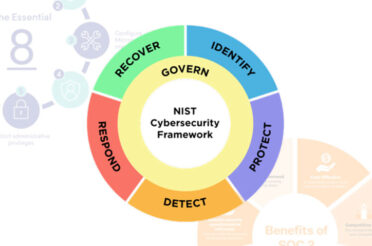Vulnerabilities in technology are an unfortunate side effect of innovation. For example, when software companies release an update, it can contain weaknesses in the code, which hackers can use to exploit. Once this is realised the vulnerabilities are addressed with a security patch, after which this cycle continues to repeat with each new release or update that is proffered.
It is thought that 93% of corporate networks are susceptible to cyberattacks, and investigating and rectifying these weaknesses isn’t always a priority for businesses. Unfortunately some do suffer breaches due to poor vulnerability management, and worryingly, 61% of security vulnerabilities in corporate networks have been in place for over 5 years.
A lot of security attacks take advantage of neglected vulnerabilities, and these threats can include account takeovers, ransomware attacks, and other types of cyberattacks.
If you have read the term “exploited” in regard to a breach, it is most likely because a vulnerability has been exploited. This can happen when a business is exposed to malicious code, and the code can provide the attacker with heightened privileges, such as running system commands or undertaking other dangerous infringements.
One way that you can mitigate the risk to your business is by improving your vulnerability management. It is not difficult to do, and we have provided six steps that you can take which will lead to an improvement of your businesses overall online security.
Steps To Improve Your Vulnerability Management
- Identify Your At Risk Assets
To start you need to identify the devices and software which will require assessment, and you should include any device that connects to your network. These include:
- Cloud services
- Computers
- IoT devices
- Servers
- Smartphones
- Tablets
Vulnerabilities can exist in different places, such as in code, platforms, firmware, or software, so you will want to compile a full list to ensure that you are best protected.
This is an important starting point as you will want to know what to include in your assessments.
- Perform An Assessment Of Your Assets For Vulnerabilities
The second step is to perform a vulnerability assessment on your assets. This should be done by an IT professional such as Aryon, who possesses specific skills and experience in this area.
During the assessment they will scan your systems for any known vulnerabilities such as software versions with known issues.
For example, a version of Microsoft Word may have a known vulnerability. If this is detected within your systems, it can be noted for future investigation and remediation.
- Prioritise Vulnerabilities By Level Of Threat
Once you have performed the assessments the results will provide you with a list that needs to be addressed. There may be multiple issues, with some being more problematic than others, and you should rank them in order of level of threat.
Those that are considered the most dangerous should be addressed first, and a vulnerability assessment tool can assist with this, as it will categorise the vulnerabilities via a rating score, from severe to low.
Additionally, you may consider ranking these vulnerabilities regarding your business’s requirements. If a software is only used sporadically on a single device, it may be considered to be a low priority, whereas an issue that is present across multiple devices would be considered to have a higher priority.
- Address And Remediate All Vulnerabilities
Once any vulnerabilities have been identified they can be remediated according to their order of priority. This might equate to applying an update or a security patch, or performing an upgrade to hardware that may be out of date.
Once you have remediated the weaknesses in your assets you should re-confirm the changes and verify that they have taken hold and are in place.
- Document Your Activities
It is important that you document the assessments and remediation as this is an important undertaking by your business, which will strengthen your online security and compliance.
This documentation can include the date of assessments and the steps taken to address each vulnerability, and keeping good records can inform future vulnerability assessments and issues.
- Schedule Your Next Vulnerability Assessment
Once you have completed an overall assessment and any remediation required you will need to plan for the future, as the vulnerability management of your technology is an ongoing process.
During 2022 there were over 22,500 new IT vulnerabilities and exposures documented, and as developers continue to release updates to their software, each one of these updates can introduce a new vulnerability to your business.
As such it is best practice to maintain a schedule for regular vulnerability assessments, and the cycle of assessment, prioritisation, mitigation, and documentation needs to be ongoing. Adherence to this will strengthen your network against cyberattacks, and it will remove one of the main pathways available to cybercriminals.
Initiate A Vulnerability Assessment
Vulnerability management is an important element of any business’s cybersecurity strategy, and Aryon is well equipped to assist you with this, and any of your online security concerns. Contact us today to schedule a vulnerability assessment so that we can ensure that your business and its online security are at their strongest.







